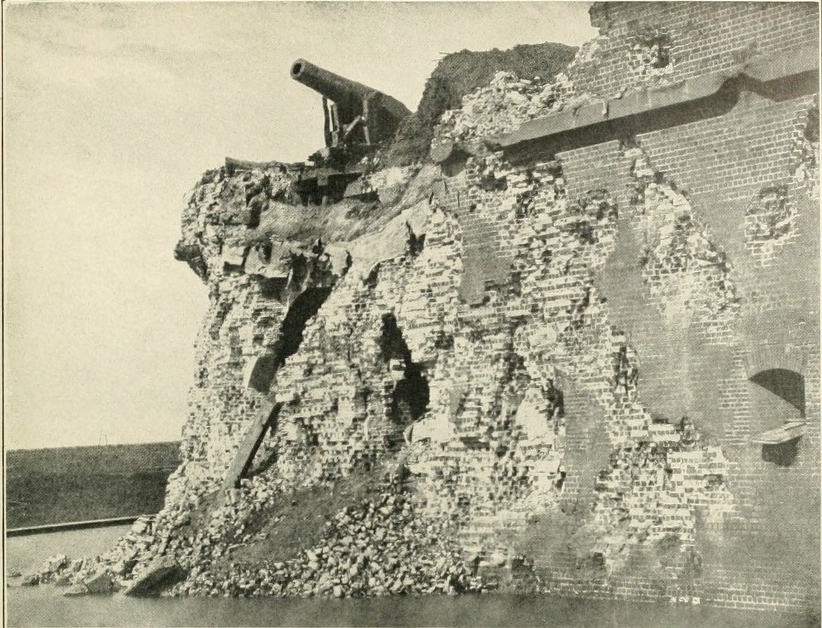Building of the fort commenced in 1812. The nation felt very vunerable after their revolutionary war in the late 18thC. So to protect against invasion, a series of forts were commissioned. The fort is an engineering triumph really, it floats over the mud and sand, using wooden piles sunk down 70ft (21.3mt). The walls are 11 ft thick, and thought to be impenetrable.
In 1862, the Union Army used for a rifiling cannon against the fort for the very first time in the civil war. A young soldier was giving an acting general position to prove his theory that the brick fortifications could be taken by rifling cannons. His career hung on the outcome of his battle against Fort Pulaski, so he took along photographers (still very new technology at this time) to photograph the results.
A shell went through the hole it created all the way through the fort parade grounds and dropped just outside the black powder store. No sparks ignited thankfully, so the fort was not completely destroyed.
The attack on the fort rendered brick fortifications useless, changing coastal defense forever (remember Fort Jefferson on Dry Tortugas? This is the reason it was not completed). General Olmstead of the confederate army decided to surrender rather than lose any men. The fort then was taken into Union hands, and it took 6 weeks to repair the damage above. Once the Union army had control of the fort, all shipping into Savannah was stopped,which crippled the confederate army. The fort was then turned into a prison for a short time.
During the 1870s, the fort underwent some improvements to allow for more powder magazines and larger guns. By the turn of the century, it had fallen into disrepair, and was marked as a national monument in the 1920s. Restoration began in the 1930s and continues today. It's considered one of the better preserved forts and has appeared in a Robert Redford movie.
And now, the pictures.










































































































































No comments:
Post a Comment